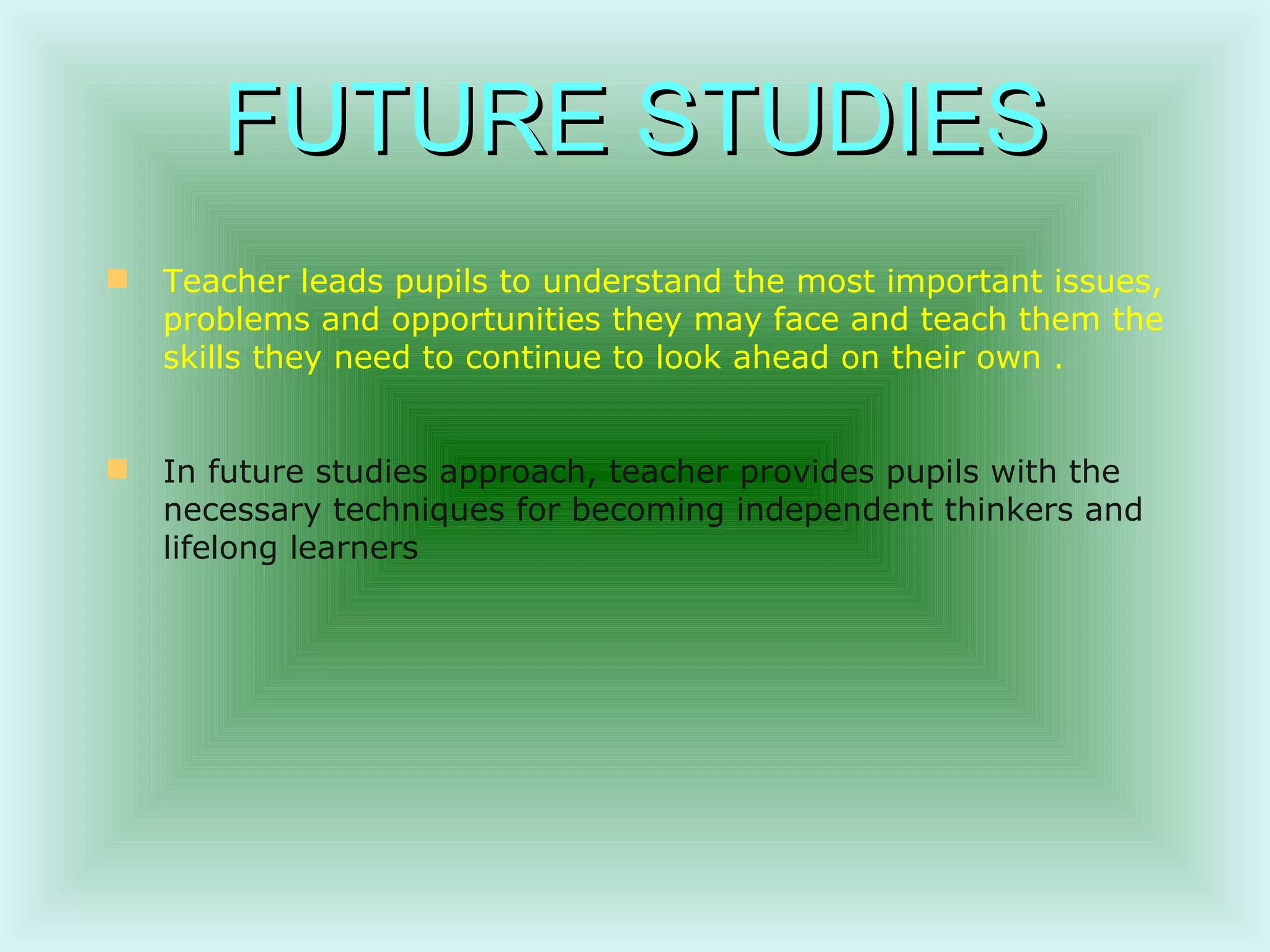The document discusses several approaches to teaching and learning mathematics:
1. Cooperative learning involves students working together in groups, under teacher supervision, to solve problems and complete projects while the teacher evaluates learning outcomes.
2. Contextual learning relates new knowledge to students' life experiences and environments to make learning more meaningful.
3. Mastery learning breaks the curriculum into small units to ensure students master one unit before moving to the next, with remedial activities as needed.
4. Constructivism and self-access learning encourage students to build knowledge based on their own exploration and prior experiences with teacher guidance.
5. Future studies prepares students to be independent thinkers by understanding future issues and acquiring lifelong learning skills.






